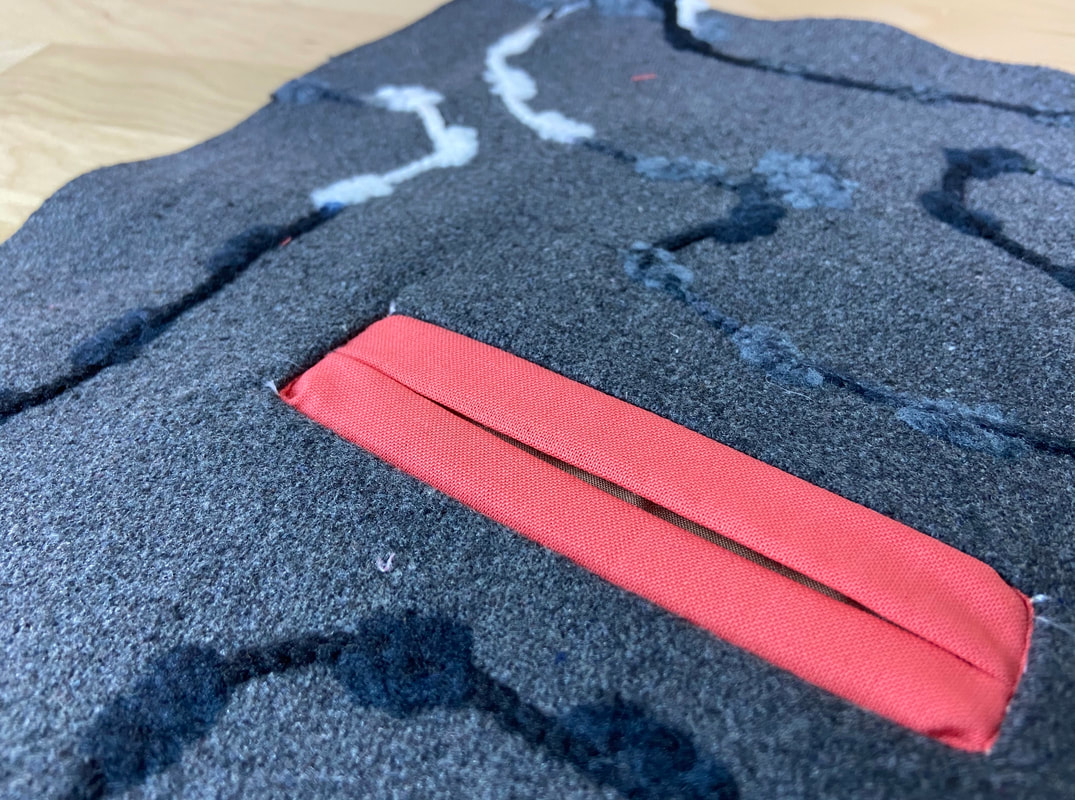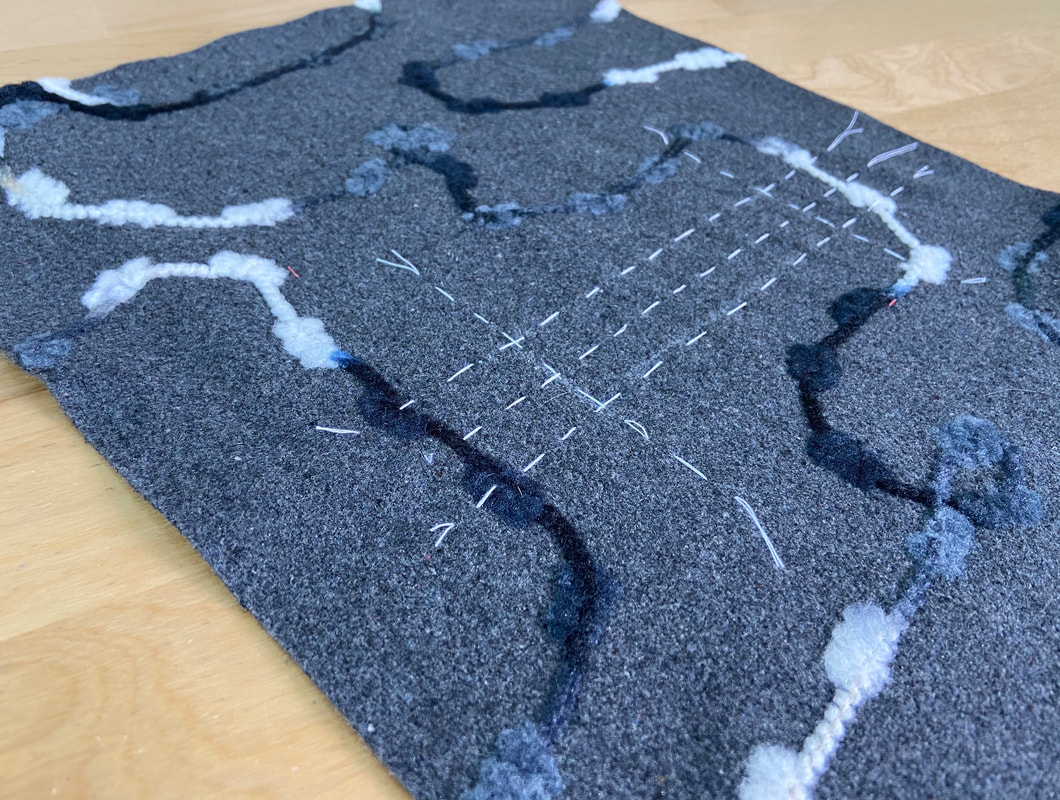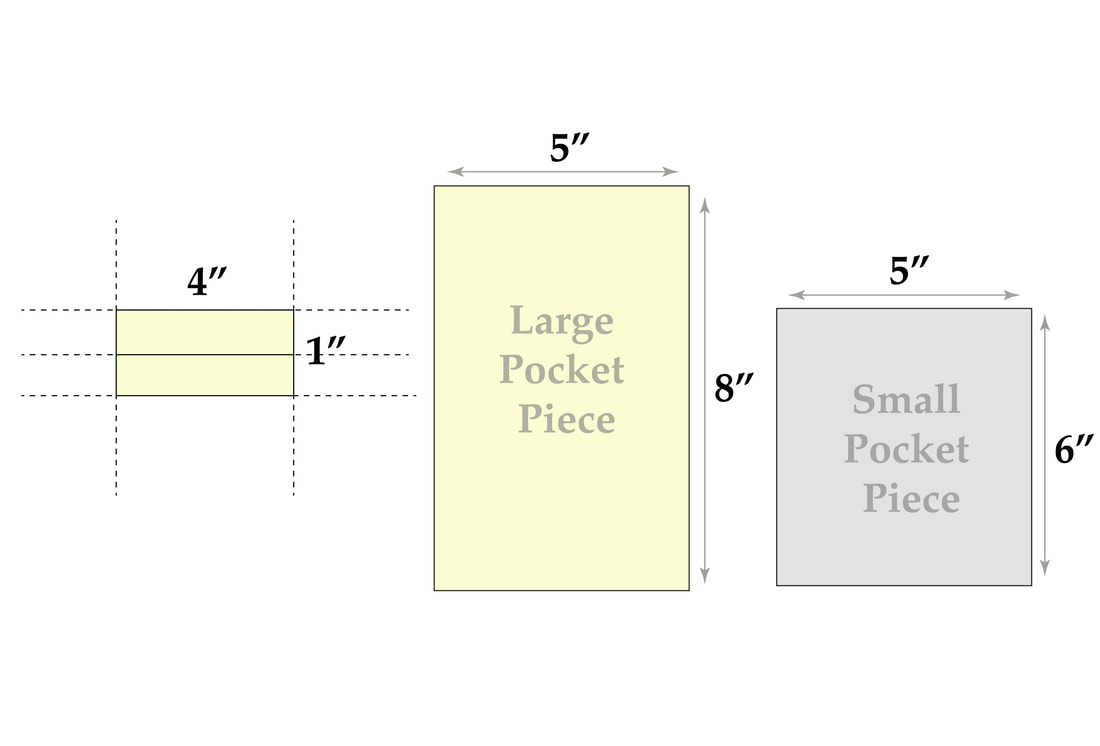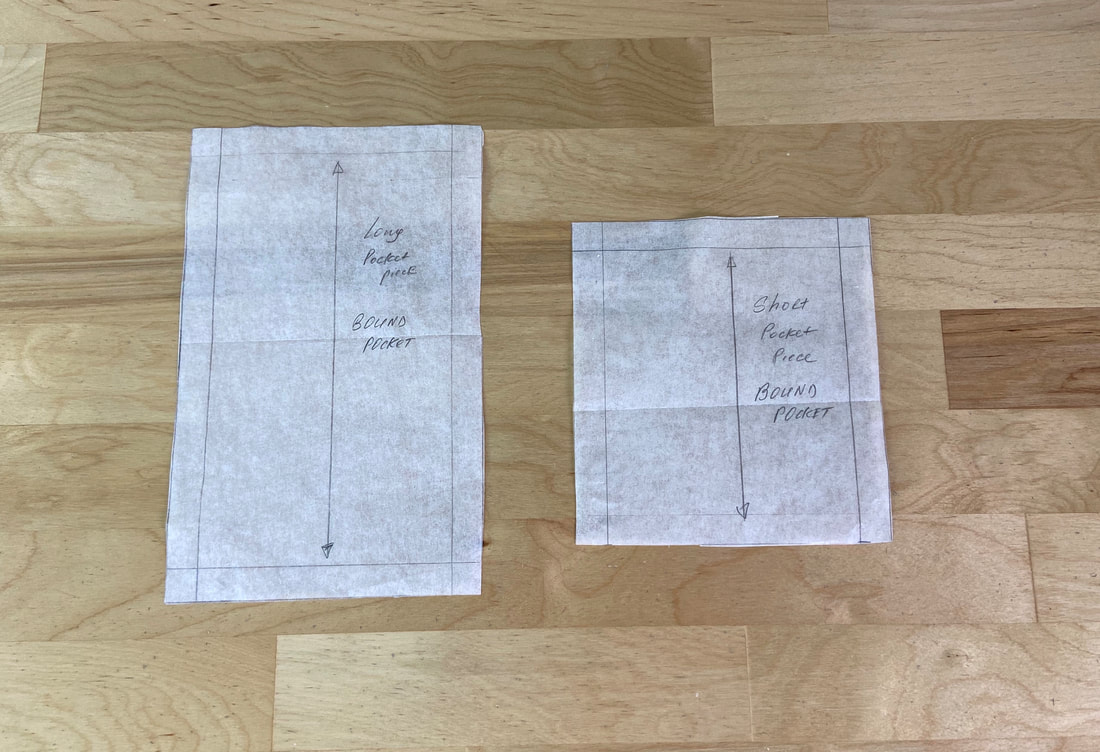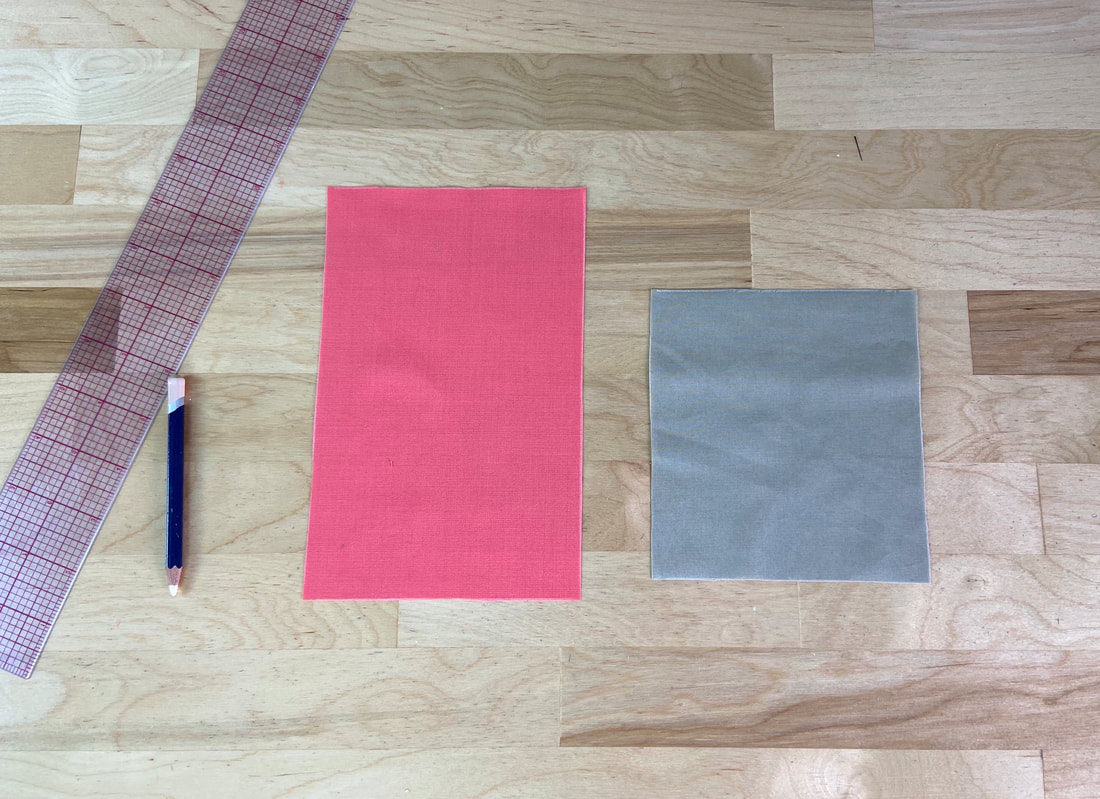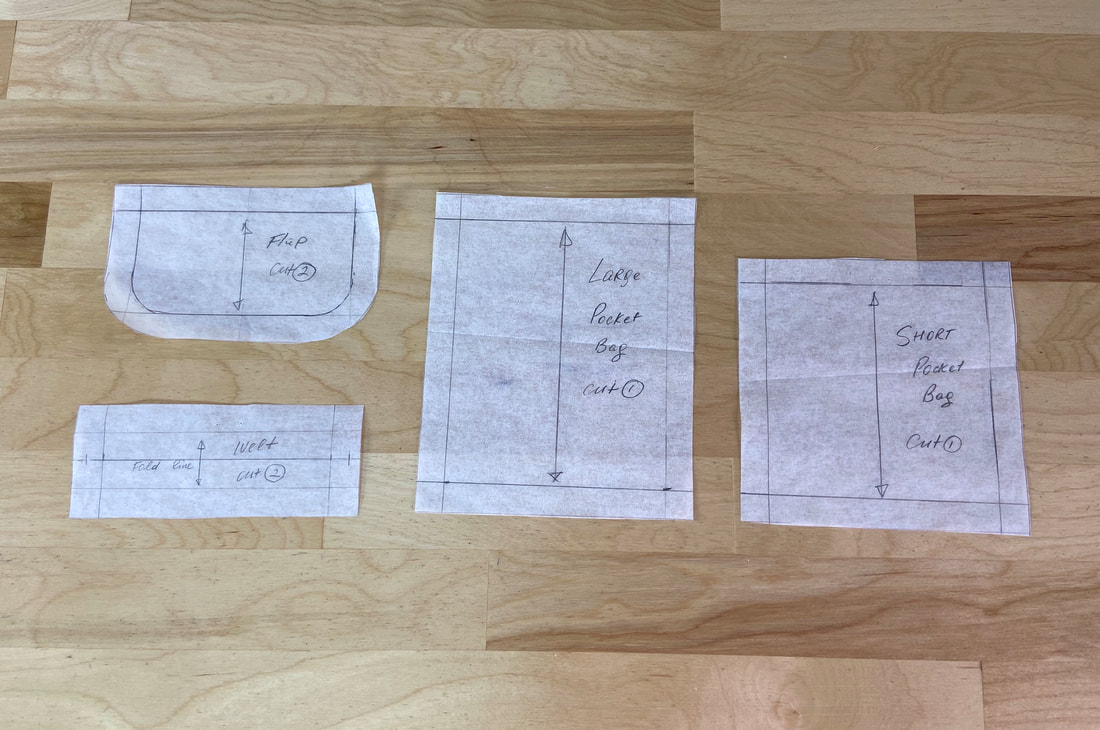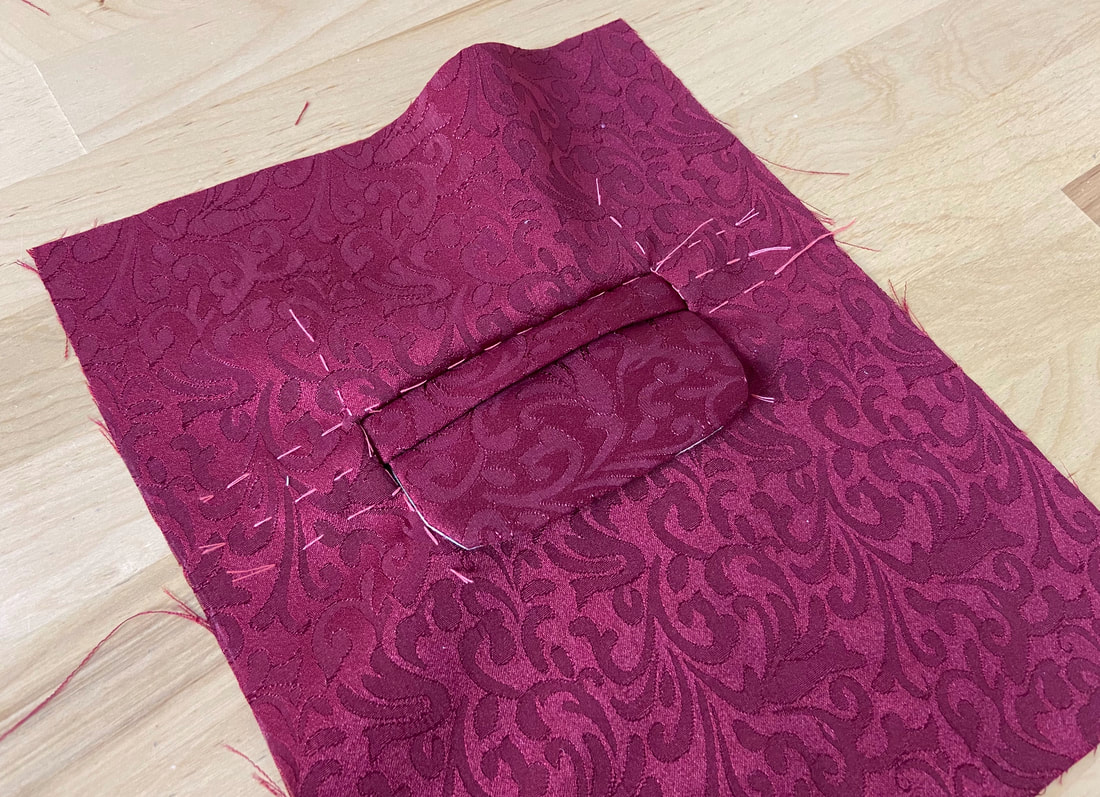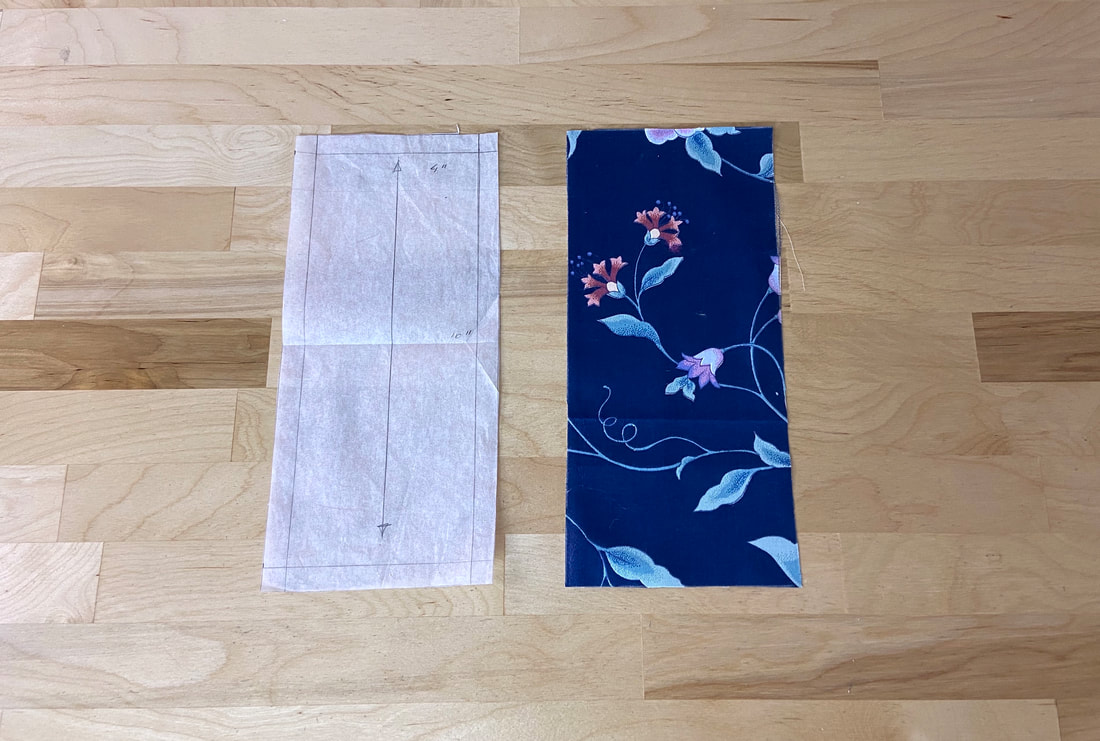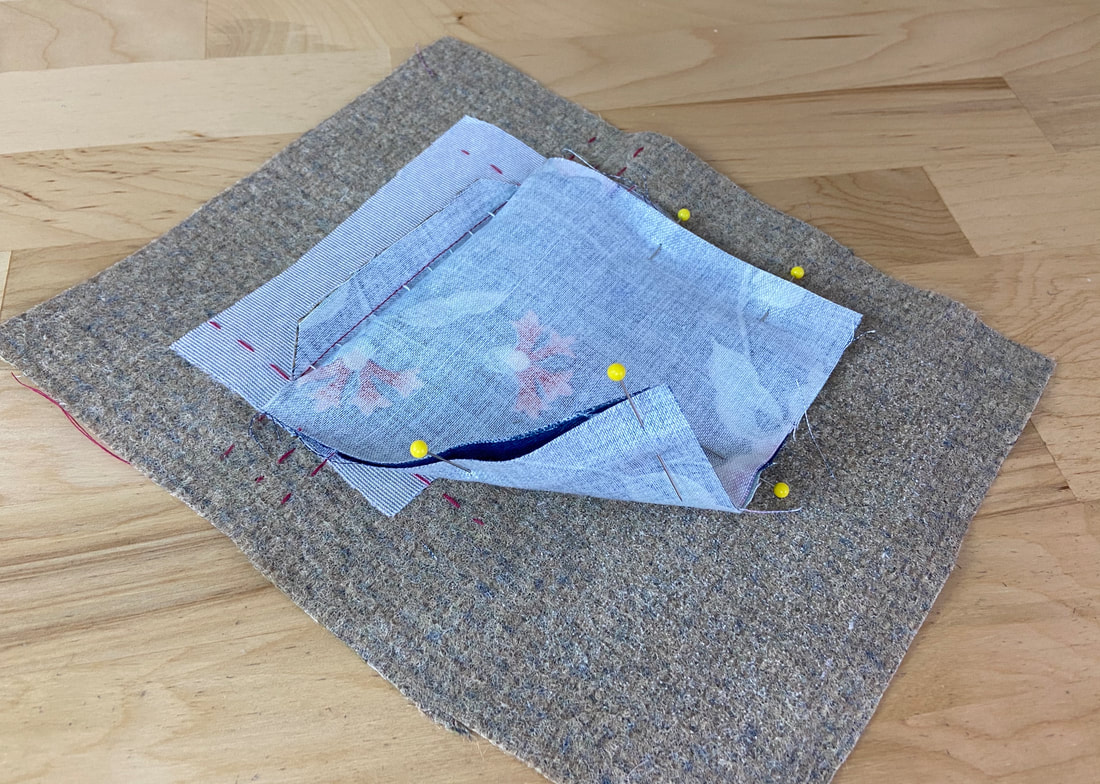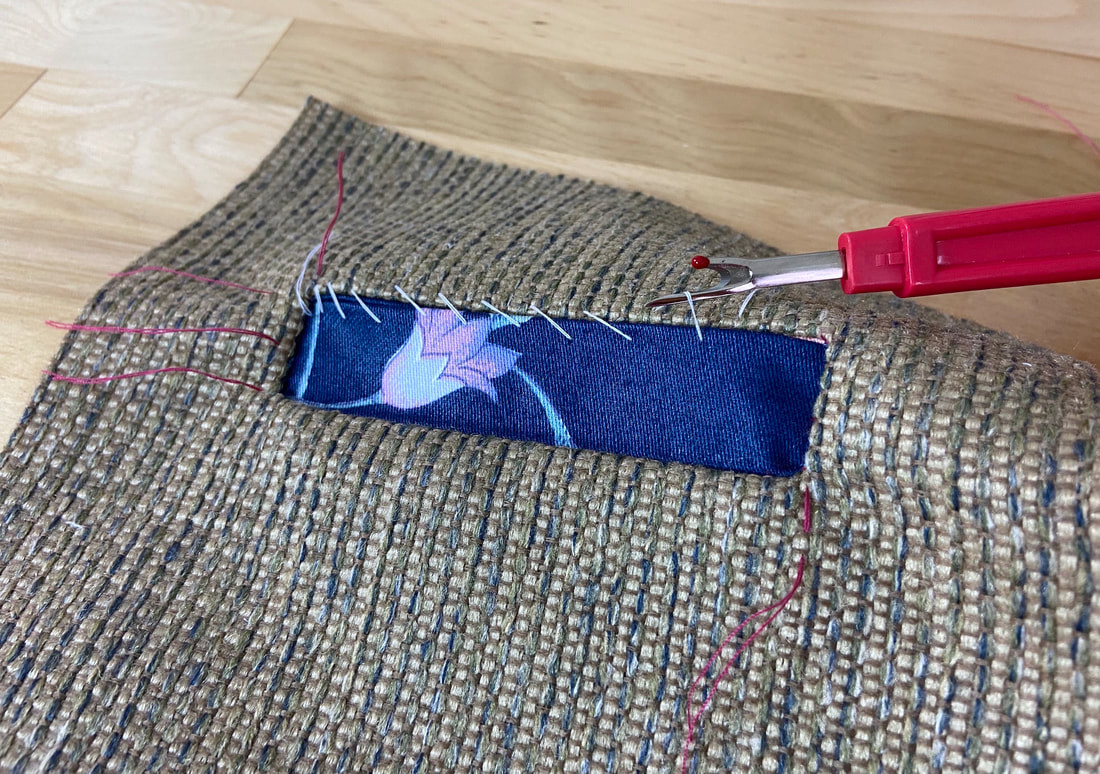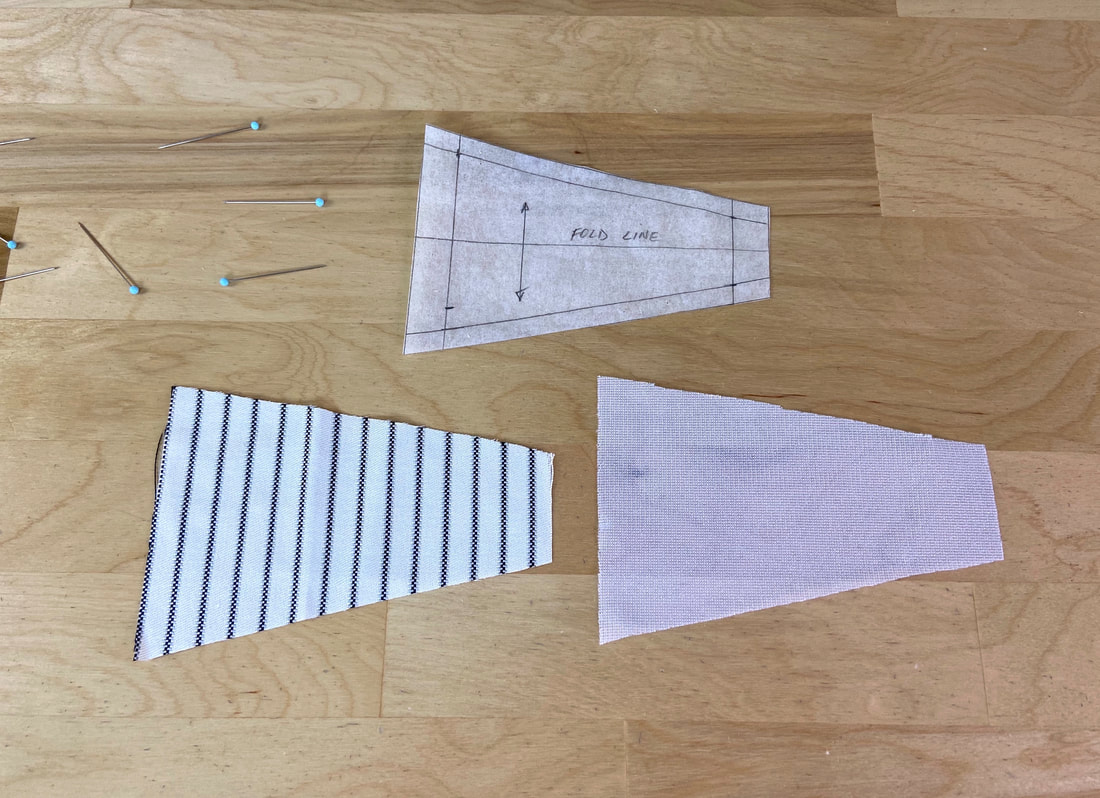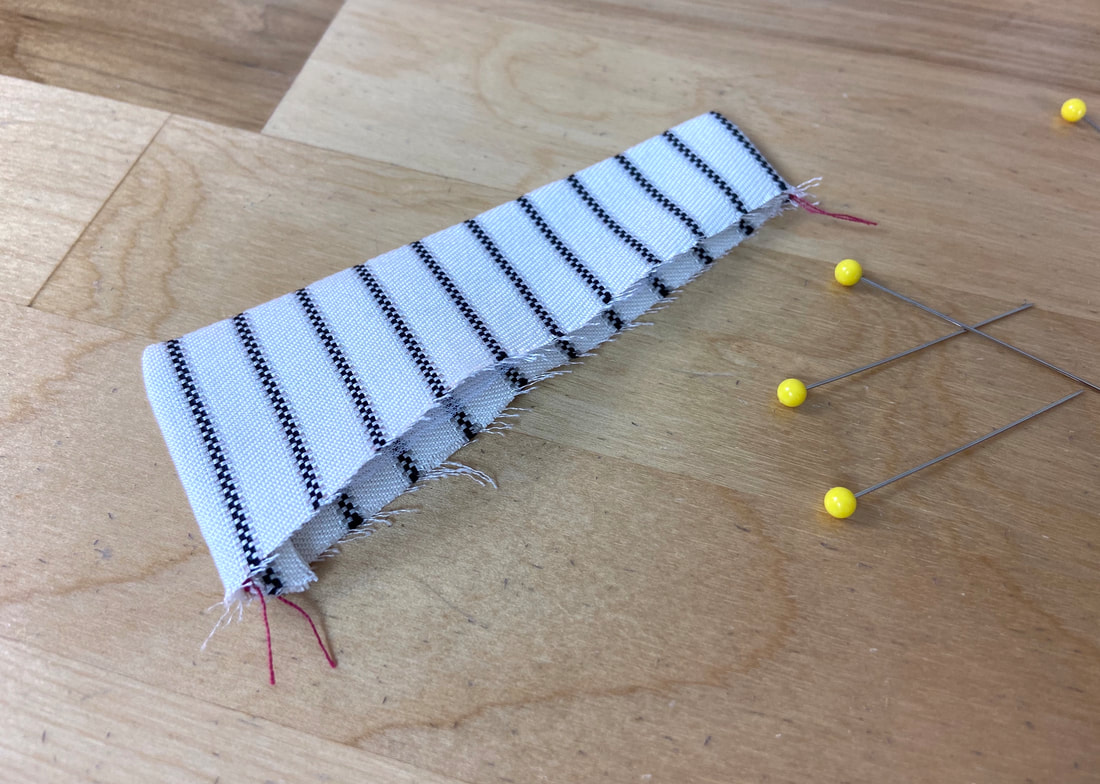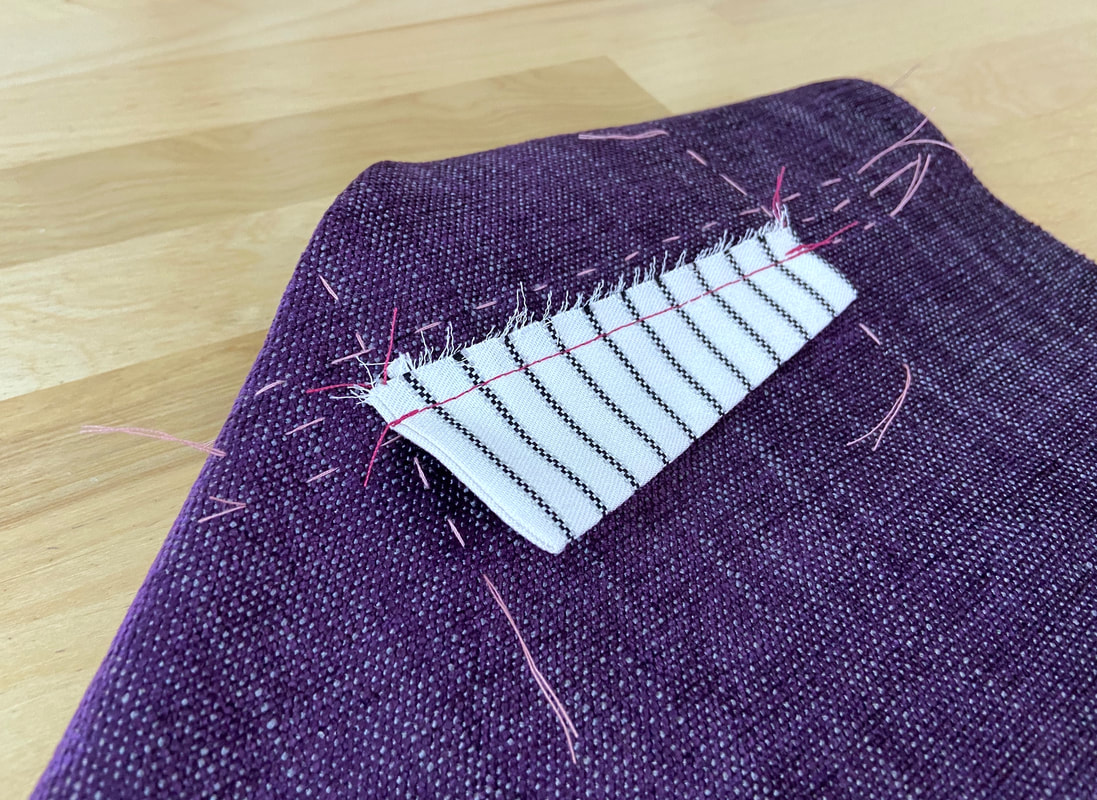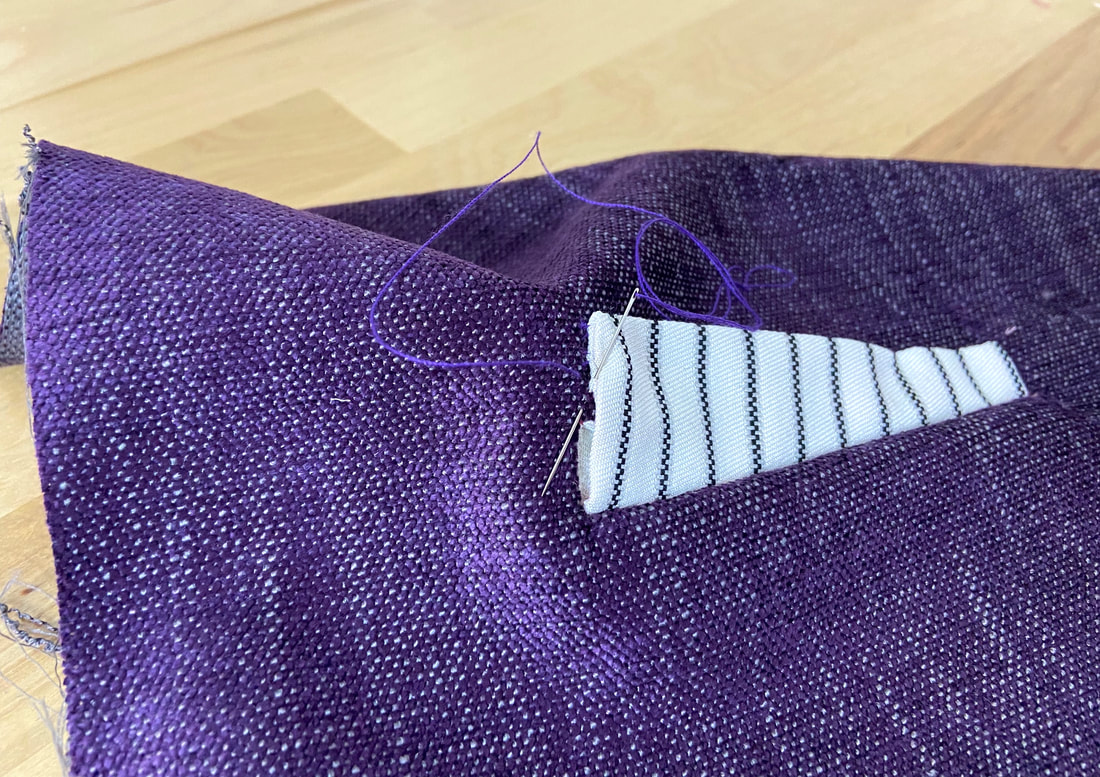How To Draft Slash Pocket Patterns Using The Pocket Opening Measurements
When sewing slash pockets, you can use the pocket's opening measurements to draft all necessary pocket patterns such as the welts, flap, and pocket bag layers.
To start with, it is important to define the exact pocket opening lines. In the image above, the pocket opening is 4" x 1". Regardless of whether your slash pocket is a single or double welt, it is helpful to consider the center line that splits the welt pocket lengthwise in half.
Given the pocket opening measurements of 4" x 1", the pocket bag pieces are always drafted at 1" wider than the pocket opening. If the pocket opening is 4" wide, the pocket bag pieces should be 5" wide.
If sewing a bound pocket application which uses the longer pocket bag to form the pocket's opening's welts, the longer pocket piece should measure the desired pocket depth (4.5" in this example) plus an additional 3.5".
The short pocket bag piece should measure the desired pocket depth (4.5" in this example) plus an additional 1.5". The pocket depth is based on how long you'd like the pocket bag to be.
If sewing a bound pocket application which uses the longer pocket bag to form the pocket's opening's welts, the longer pocket piece should measure the desired pocket depth (4.5" in this example) plus an additional 3.5".
The short pocket bag piece should measure the desired pocket depth (4.5" in this example) plus an additional 1.5". The pocket depth is based on how long you'd like the pocket bag to be.
The measurements specified above include a standard 1/2" seam allowance along all edges of both pattern pieces. When drafting your patterns, be sure to mark the half-inch seam allowance along each edge. Don't forget to note a grainline and pattern identifying name for future reference (ex: Bound Pocket- Large pocket piece).
You can now use and re-use these simple sewing patterns to construct a double-welt bound slash pocket from any fabric of your choice.
You can now use and re-use these simple sewing patterns to construct a double-welt bound slash pocket from any fabric of your choice.
When sewing a welt pocket with flap, additional to the pocket bag pieces, you will also need to draft the flap and welt patterns.
Assuming the pocket opening is 4" x 1" again, use the following conventions:
The flap pattern should be 1" wider than the pocket opening and as long as desired (conventionally, 2"-3"). Add 1" to account for two 1/2" seam allowances along the top and bottom edges. The final flap pattern measurements in this case will be 5" wide by 3" long which also includes all necessary seam allowances.
To draft a curved bottom flap, simply draw a 5"x 3" rectangle and curve its bottom corners. Keep in mind that the seam allowance is already accounted for in the 5x3 measurement so all you have to do is mark the seamline within the rectangular lines as shown above.
Assuming the pocket opening is 4" x 1" again, use the following conventions:
The flap pattern should be 1" wider than the pocket opening and as long as desired (conventionally, 2"-3"). Add 1" to account for two 1/2" seam allowances along the top and bottom edges. The final flap pattern measurements in this case will be 5" wide by 3" long which also includes all necessary seam allowances.
To draft a curved bottom flap, simply draw a 5"x 3" rectangle and curve its bottom corners. Keep in mind that the seam allowance is already accounted for in the 5x3 measurement so all you have to do is mark the seamline within the rectangular lines as shown above.
The welt pattern is cut 1" longer than the pocket opening width (which is 4" in this case).
If the pocket opening will have two welts, the welt should measure the length of the entire pocket opening (1" in this case) plus an extra 1" to account for 1/2" seam allowances along the top and bottom edges. This is shown in the example above with the final welt pattern measuring 5"x 2" which includes the necessary 1/2" seam allowance along all edges. When cutting your pocket patterns you will need to cut two welt pieces.
If the pocket features a single welt only, the welt should be double the entire pocket opening (1" in this case) plus 1" to account for seam allowance. In this case, the final welt pattern is a rectangle measuring 5" wide by 3" long (1"x2 plus the 1" seam allowance).
In the construction process, you will only need to cut one welt piece.
If the pocket opening will have two welts, the welt should measure the length of the entire pocket opening (1" in this case) plus an extra 1" to account for 1/2" seam allowances along the top and bottom edges. This is shown in the example above with the final welt pattern measuring 5"x 2" which includes the necessary 1/2" seam allowance along all edges. When cutting your pocket patterns you will need to cut two welt pieces.
If the pocket features a single welt only, the welt should be double the entire pocket opening (1" in this case) plus 1" to account for seam allowance. In this case, the final welt pattern is a rectangle measuring 5" wide by 3" long (1"x2 plus the 1" seam allowance).
In the construction process, you will only need to cut one welt piece.
In the finished pocket application, all pocket components should have an equal width so they all fit together evenly within the pocket opening.
In a self-welt pocket application, a single pocket piece is used to clean-finish both the pocket opening welt and the pocket bag. The pocket piece is drafted such that it is 1" wider than the pocket opening width. The length is double the pocket opening length (1" x2) plus double the desired pocket depth (in this case, 4.5" x2). Thus, if the pocket opening is 4" x 1", then the final pattern measurements are 5" x 11" accounting for 1/2" seam allowance along all edges.
The resulting pocket pattern will form a single welt that fully covers the pocket's opening.
If sewing irregularly-shaped welts, follow the same logic when drafting the welt sewing pattern. It is important that the width is at least 1" wider than the pocket opening, and the finished welt covers the pocket opening.
In the example above, the asymmetric welt is constructed individually, similar to a flap, by clean-finishing its side edges. The finished welt piece should fit perfectly within the pocket opening lines with both sides aligning within the pocket opening as shown above.
When the slash pocket is completed, the welt's finished sides should align perfectly with the corresponding pocket side edges such that it fully covers the slash opening.

